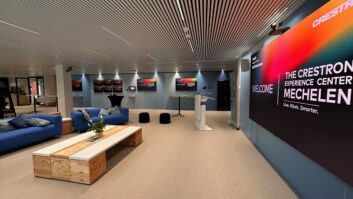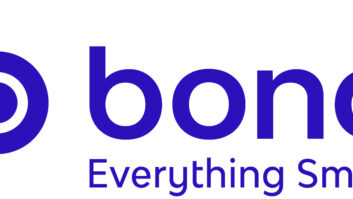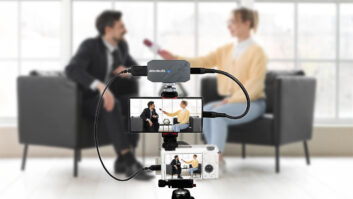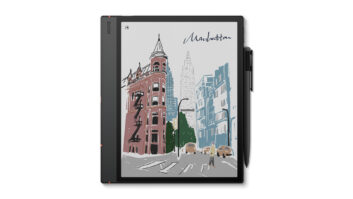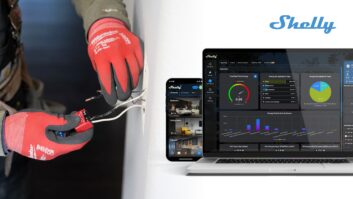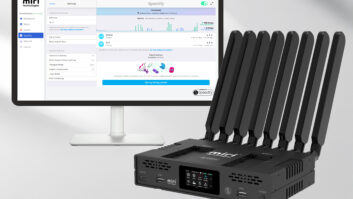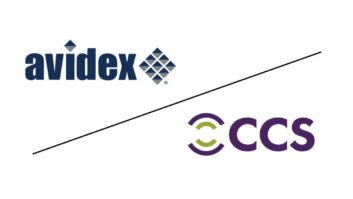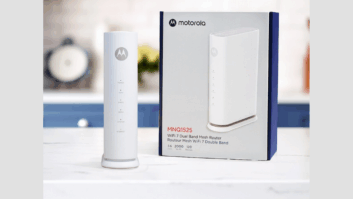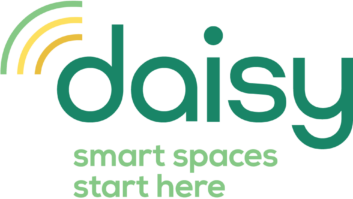The Digital Living Network Alliance (DLNA) launched a certification program for version 1.5 of its network-interoperability guidelines and expects the first certified v1.5 devices to be available in the first quarter of 2008.
Version 1.5 was adopted in March 2006 to extend minimum compatibility standards beyond home-networking products such as PCs and A/V components to new home devices, including networked printers and handheld remotes, as well as to mobile devices such as cellphones and portable media players (PMPs).
The v1.5 guidelines:
- enable transfer of audio, video and digital images back and forth between compliant home devices and mobile devices, which can include cellphones, PMPs and car A/V systems.
- enable DLNA-certified networked printers to print out images displayed on such compliant devices as TVs and cellphones.
- add “push” devices to provide more convenient control of networked devices in the home. Networked remote controls and cellphones, for example, would be able to discover devices on the network, discover the content on the devices, and push content from one device to another for viewing or listening. Previously the guidelines allowed only for devices that pulled content from other devices for local viewing or listening.
The launch of the extended certification program is about five months later than the organization originally intended when it approved the expanded guidelines in March 2006, said DLNA chairman and president Scott Smyers. “With any technical development effort of this complexity,” he said, “including the requirement for a rather comprehensive and elaborate test tool and the identification and certification of reference devices used as part of the DLNA certification process, it is not uncommon for there to be some difficulty in accurately predicting a ‘go live’ date, and DLNA is no different.”
Under the original suite of guidelines, DLNA-certified media servers and renderers (such as digital media adapters, or DMAs) for the home must incorporate Microsoft’s universal plug-and-play (UPnP) technology for media management and automatic discovery of a device, its content, and the format of its content.
The discovery process enables DMAs to identify the formats in which content is stored on a networked server, such as a PC, and whether that content is in a format that the DMA supports. If so, the content is transferred automatically in that format. If not, the server automatically transcodes the content into a DLNA-mandatory format for transfer. The server, for example, might transcode an MP3 file into mandatory uncompressed PCM for transfer to the DMA.
For home servers and home DMAs, mandatory formats for transferring media are JPEG for images, PCM for audio and MPEG-2 for video. Devices need only incorporate the format that applies to them. An audio device, for example, doesn’t have to incorporate the ability to display JPEG images. A device such as a TV or PC, however, must incorporate all three at a minimum.
DLNA-certified servers and DMAs can also support optional media formats.
For connectivity, DLNA-certified DMAs and servers must incorporate wired Ethernet, one of the Wi-Fi-certified 802.11 wireless standards (802.11a, b or g), or a combination of these physical-layer interfaces.
With v1.5, printers get the JPEG format as a mandatory printer language to supplement the proprietary printer languages that each printer maker currently embeds in its brands. The JPEG mandate makes it unnecessary for suppliers to load dozens of printer drivers onto home devices such as TVs and cellphones.
For handheld remote control, the v1.5 standard requires handheld devices to incorporate either Bluetooth or one of the wireless IEEE 802.11a/b/g standards to talk to a wireless access point to control a home DMA and server.
For mobile devices, DLNA makes some changes to the mandatory media formats. The mandatory formats still include PCM for audio and JPEG for images, but the mandatory video format changes from MPEG-2 to MPEG-4 (also called AVC) because the latter doubles the compression rate and allows for lower bit rates. Although MPEG-4 is mandatory on the mobile side and MPEG-2 is mandatory on the home side, the association doesn’t expect interoperability problems for two reasons. First, many chipsets simultaneously support MPEG-2 and -4. Second, if a home DMA doesn’t support MPEG-4, then users could buy a Media Interoperability Unit (MIU), developed under the mobile specs to perform format conversions from MPEG-4 to MPEG-2. An MIU could also be built into any DLNA device.
For mobile device connectivity, mobile devices must incorporate wired Ethernet, one of the Wi-Fi-certified 802.11 wireless standards (802.11a, b or g), or Bluetooth’s file-transfer profile. To ensure connectivity between mobile and home DLNA devices, consumers would need a DLNA device that delivers “physical interface conversion,” Smyers said. The device would contain the group’s Mobile Network Connectivity Function (M-NCF), which could also be incorporated in any DLNA device.




